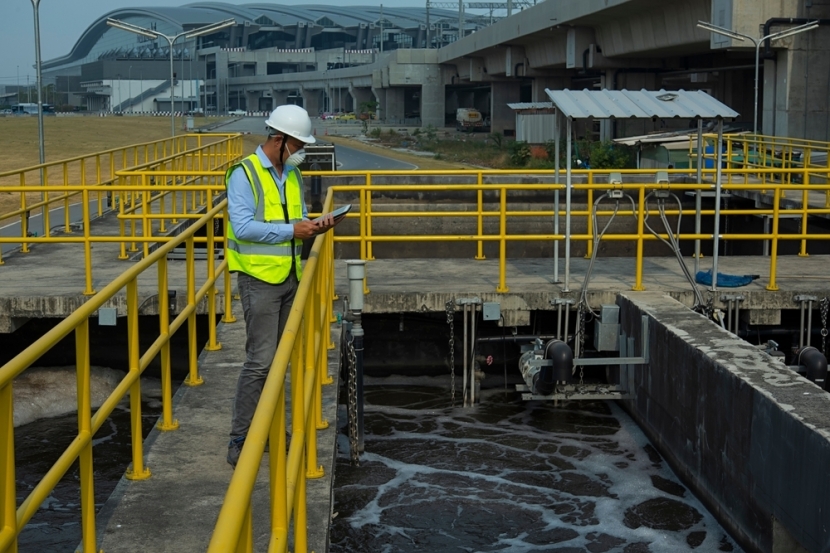What are the wastewater treatment processes?
Wastewater treatment processes include:
Fine screening or screening systems
Initially, the dirty water is mechanically filtered through automatic or manual fine screening or sieving systems to rid it of large and small solid debris: from pieces of wood to the garbage that is produced every day (plastic, Q-tips, butts) and that should never be thrown into the water or toilet.
Process of sedimentation or desanding
At a later stage, smaller debris, such as sand, soil, oils and grease, must be filtered out and removed by a process of sedimentation, or desanding, which involves bringing sedimentable bodies to settle to the bottom of the sedimentation tank or come in flotation in the case of oils and grease.
Oxidative process
Only at this point does the actual water treatment and purification take place, that is, the cleaning of pollutants through an oxidative process. Biological oxidative treatment consists of the biodegradation by microorganisms of all organic substances in the water to be purified into simpler, environmentally harmless substances. This treatment is nothing more than an extension of the self-purification that takes place spontaneously in waterways, operated in the case of the treatment plant, in an environment in which certain optimal conditions are artificially maintained for the purpose of concentrating and accelerating the process taking place.
Several techniques can be used for biological oxidation, of which the most traditional ones are:
- Active mud systems, currently the most widely used systems due to their high efficiency (>90% BOD removal). They are suspended biomass systems as they are characterized by the presence of free moving flocs within the liquid mass
- Percolator filter systems: a biomass adhesive systems, in which the bacterial biomass grows by remaining ashesive to a surface, in particular, percolator filters are fixed support systems through which the slurry flows
- Biodisc purification plants are also biomass-adhered systems on mobile supports, where the support moves semi-immersed in the slurry
- MBBR (Moving Bed Biofilm Reactor): this innovative technology is an evolution and improvement of the traditional activated slurry plant. Basically, it is a suspended-mass biological plant in which the fill material (carrier), consisting of rigid plastic material with high specific surface area (up to 500-600 sq m/mc), is placed inside the MBBR reactor and acts as a support for the development of microorganisms. This type of plant can operate at much higher loads than the conventional Activated Sludge plant and is therefore particularly suitable for the treatment of highly polluting industrial wastewater.
- MBR (Membrane Biological Reactor): it's a biological water purification system and consists of a combination of the traditional activated sludge purification process and a membrane filter separation system that replaces the normal secondary sedimenter. This process allows for a higher concentration of activated sludge in the biological reactors than conventional plants. Working at a high concentration of biomass therefore allows for a very high purification yield.
- SBRs (Sequencing Batch Reactor) represent discontinuous-flow biological treatment systems, consisting of a basin in which you and actuators connected to a microprocessor that also manages the feed pumps, sludge purge and eventual emptying pump.
Process of secondary sedimentation
The last stage of the wastewater purification process is Secondary Sedimentation, which follows the oxidative stage and is responsible for separating the biological sludge from the rest of the clarified or treated effluent. At the bottom of the secondary sedimenter, the settled biological sludge accumulates, while the clarified effluent skims from the surface.
Process of Disinfection
The clarified or treated effluent will be sent for further treatment such as Disinfection to kill all pathogens present in the purified effluent (bacteria, funges, viruses) or discharged directly. The sedimented biological sludge (sludge line) can take various paths. It can be pumped back to the oxidation tank. It can be partially pumped to the first sedimenter to improve the characteristics of the primary sludge. It can be sent to sludge treatment aimed at disposal according to law.






